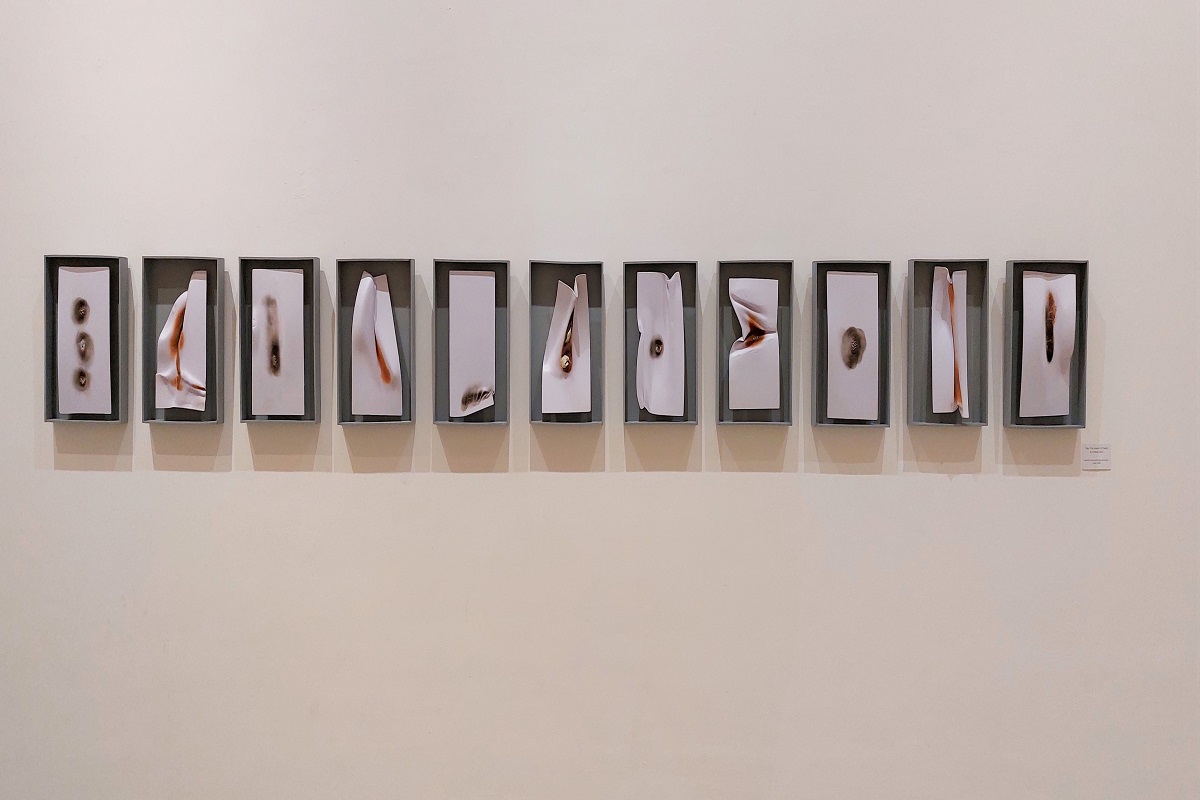Infant dies, five injured in roof collapse in Delhi
According to police officials, the incident took place at around 3 am while the family was asleep.
The national capital witnessed a unique exhibition this week at the Bikaner House, focusing on the responsibility of humankind to protect and restore the environment.

[Photo: SNS]
Featuring the works of Indian and Greek artists — Eleni Stoelinga Tsiapara (Greece), Pankaj Guru (India) and Priyanka Gupta (India) — the ‘Plastic Shapes Our Lives’ exhibition was curated by Georgina Maddox.
The trio’s plastic sculptures that have been reclaimed and treated with various processes are an expression of their styles, which point to everyone’s responsibility to care for the environment.
Advertisement
“What brings these artists together, beyond their friendship, their mutual respect for each other’s art and ideas, is their shared experience of a planet in crisis, literally ‘swimming in discarded plastic’, which is harming not just the environment but animal and human health as well. Their focus is on the responsibility of mankind to protect and restore the environment,” the curator said.
“While it may be impossible to eliminate plastic from our lives completely, we can strive to find ways to use it in a more balanced and sustainable way. By reflecting on our relationship with plastic and exploring creative solutions, we can take meaningful steps toward reducing its impact on the environment,” said three artists.
The show comes as a continuation of the investigation of the subject by the three artists in their exposition in October last year at the Museum of Archeology of Olympia, Greece — where the first Olympic Games were held (in 776 BC).
Eleni Stoelinga-Tsiapara has also experimented with her “Pipes shaped into Humans” with the objective to highlight the air pollution from exhaust pipes and industrial chimneys.
Pankaj Guru works in three-dimensional art for the development of knowledge, imagination, and perception of nature, of life in its various forms. In his works, human faces merge with abstract bodies and the glimmering of geometric shapes that capture the viewer’s attention with their charm.
At the same time, Priyanka Gupta’s work is an expression of different forms and the thoughts that lie behind it. For this exhibition, she has produced work that presents itself as tall spiraling work that appears as thin columnar structures done in plastic.
By highlighting the beauty and potential of recycled plastic, one artist encourages us to rethink the value of this material while also raising awareness of its impact on the environment.
Another artist explores the dichotomy of plastic, creating thought-provoking abstract paintings that challenge us to reflect on our own consumption habits and the need for more sustainable alternatives.
The third artist uses plastic objects in our daily lives to create large-scale installations, emphasising the ubiquitous presence of plastic and encouraging us to find a balance between its convenience and environmental impact.
The artist trio has worked with plastic materials. The sculptural works are transformative and are coloured in metallic shades, abstract and beautiful in many ways.
Through their works, the artists remind us that plastic has become an essential part of our modern way of life, but they also acknowledge the urgent need to use it more responsibly.
Commenting about his work titled ‘The Imprint of Plastics,’ Pankaj Guru said: “My relief sculptures, crafted from recycled plastic and paper sheets, are a commentary on the paradoxical nature of plastic as a versatile material that comes at a great cost to the environment. While plastic can mimic the physical characteristics of many materials, its cheap production and excessive use have contributed significantly to pollution and waste.”
Eleni Stoelinga-Tsiapara said, “As an artist, my work is a reflection of my deep concern for the environment and sustainability. My latest creation, a sitting abstract sculpture made from recycled plastic pipe, embodies this passion. Through this piece, I seek to highlight the beauty and potential of materials that are often overlooked and discarded.”
Advertisement